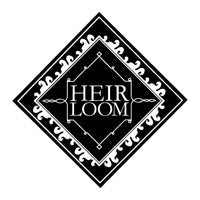

A Brief History of the Arak Area
The district of Arak and its surroundings in the Markazi Province were part of the ancient settlements of the Persian Plateau. Markazi translates to “central” and this region was included in every Persian Empire going back to the Medians in the first millennium BC. It features harsh, dry summers and severe winters which made it unappealing to the invading Turk and Mongol nomads in the late Middle Ages. As new traditions and language become integrated into the broader culture this area maintained a more classically “Persian” character than some of their neighbors.
The Safavid dynasty (1501-1736) would reestablish a strong Persian identity but the Persian people continued their tradition as a polyglot and multi-ethnic nation. As Shah Abbas retook territory in the Caucuses during the Ottoman – Safavid wars (1603-1618) he would forcibly resettle hundreds of thousands of Armenians deep into the empire near his capital of Isfahan. Most settled in a section of the city that would become known as New Julfa, while others would settle in villages to the north of the capital, in a region known as Bouvari that stretched all the way to a village in the southern Arak area known as Lilihan (modern-day Khomein). The Shah protected the resettled Armenians, and they soon became an important and prosperous community. They were very active both in the cultural and economic spheres as the nation entered what many consider the greatest period of Persian art production and a golden age of court-based rug weaving. The court of Shah Abbas patronized Armenian artists and artisans and according to travelers’ accounts, the Armenians were revered as some of the most exceptional weavers in the capital.

A New Golden Age
Following the collapse of the Safavids in 1722 and the ensuing chaos, commercial rug production throughout Persia diminished significantly and nearly ceased to exist in important centers like Isfahan for the next 150 years. By the 19th century, the Qajar dynasty (1789-1925) would restore stability and promote ancient traditions, priming the industry for a revival. The renaissance was significant but with a dramatically different output. European firms became actively involved in the trade in response to increasing demand from the burgeoning European and American middle and upper classes. In the Arak area, a cottage industry developed where rugs were woven by contract with European firms (like Ziegler and Co.) who married classic Persian design with current Western taste. They employed designers from major Western department stores, like B. Altman and Liberty of London, to modify the scale and colorways of quintessential Safavid designs from the 17th and 18th centuries. Wool dyeing was centralized at their main production site in order to standardize and control the colors employed by the contract weavers. Besides the famous Ziegler Sultanabads, other districts also became well known for their production of Sarouks, Farahans, and Lilihans.

Painted Sarouks and the Rise of the American Market
By the 20th century, the Arak region was producing more room-sized rugs than any other area in Persia. These rugs were popular with European and American markets during the first decade of the century, but with the outbreak of World War I, demand dipped dramatically. With Europe left to rebuild, the United States became the primary market for Persian rugs and American tastes would become the dominant factor in rug weaving in the Arak area. A distinctive style of rug with red fields and floral sprays called Sarouk was produced in workshops in the provincial capital and exported in large numbers to the United States. The colors were too saturated for local taste so upon arrival dealers altered the rugs by lightening them with bleaching agents and then “painting” or re-tinting the reds with dye and fountain pens. Thus the “painted” or “American” Sarouk was born, and it was a hit. Demand was so high that Armenian weavers in Lilihan soon followed suit creating their own interpretation of the floral spray, which was usually coarser and utilized their own construction method known as “Armenibaft”. It was easily distinguished as it was single wefted and utilized a symmetrical or “Turkish” knot as opposed to the asymmetrical or “Persian” knot employed elsewhere in the district. As new rugs were produced to satisfy this demand, buying agents would also acquire older rugs in the area for resale. Once they reached import centers like New York, these older pieces would go through the same “painting” process as the newer ones in order to standardize them. The color palette and patterning of our rug this month suggests it was likely an earlier Lilihan that was scooped up and painted during the Sarouk craze of the 1920s.


We sourced our information from: Oriental Rugs: A Complete Guide by Murray L. Eiland, Jr. & Murray Eiland III; Oriental Rug Symbols by John Train; Hali Magazine; Cultures in Contact: World Migrations in the Second Millennium and conversations with fellow dealers.


